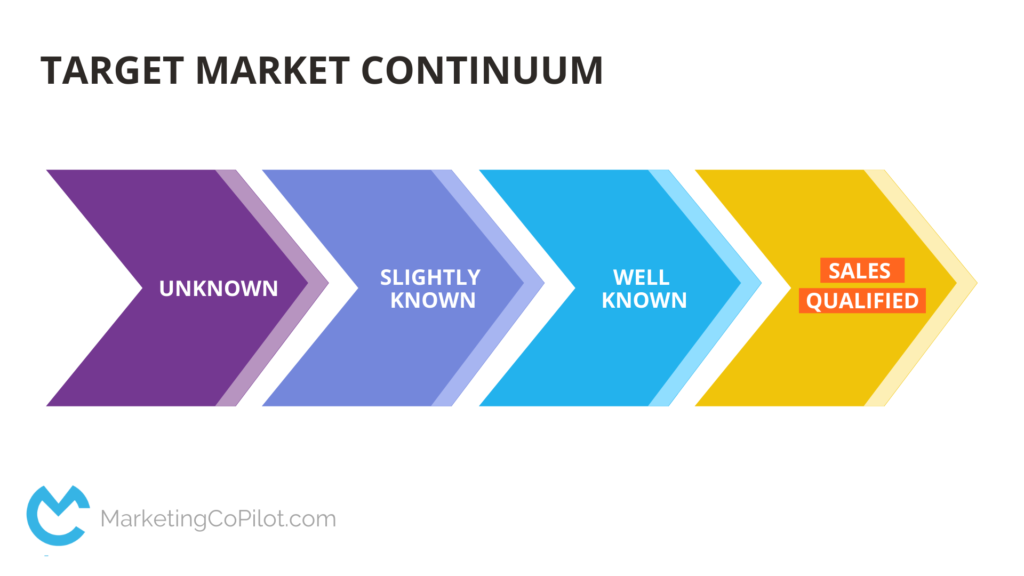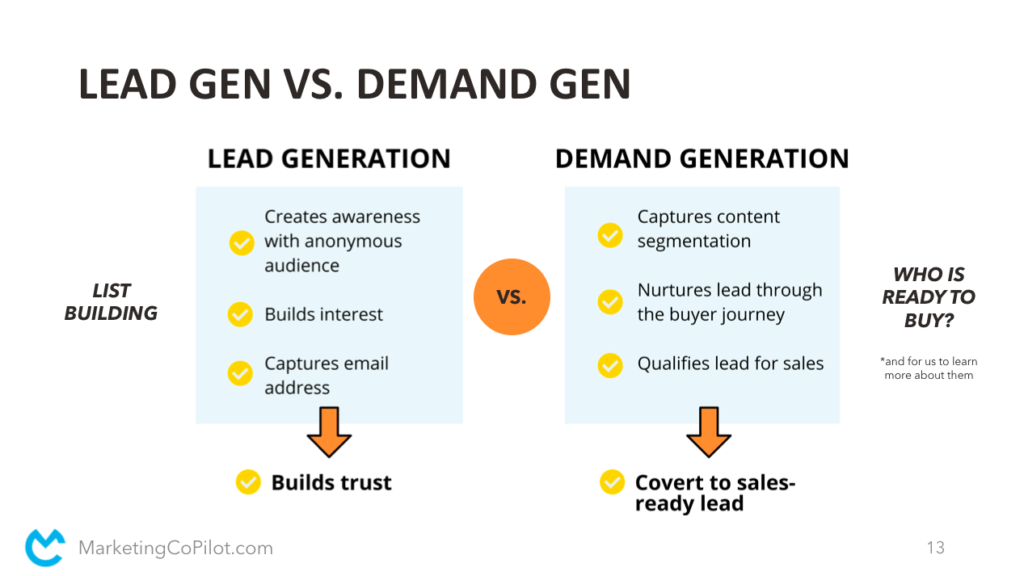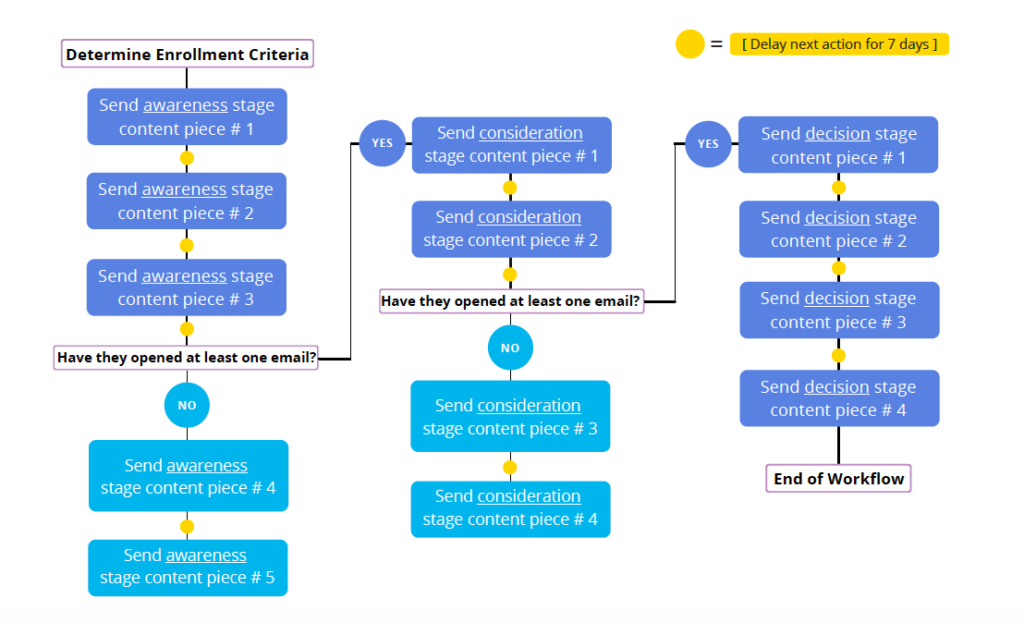By Marie Wiese | President of Marketing CoPilot
How Can I Navigate Out of the Unknown?
As marketers and business people, we want to believe that we know and can identify everyone in our target market. But the reality is that we quite frankly, cannot.

Think of your target market as a continuum that spans from unknown, to slightly known, to well known, and then qualified. The question we ask ourselves when looking at this image is: “How can we turn those unknown people in our target market into sales-qualified leads?”
Let’s Start with the Basics
To most effectively use the data in our CRM, it is essential that we know and identify the differences between Lead Generation, Demand Generation, and Sales Qualified Leads.

Lead Generation: When we talk about lead generation, we are talking about list building. We are working to target and create awareness of a business, product, or service to an anonymous audience. The primary goal in lead generation is to create awareness and gain the trust of a prospective future buyer.
Demand Generation: Demand generation is all about targeting who is ready to buy. By using content segmentation — or the personalization of your website’s content to the various groups of your target market — we are able to understand which buyer personas are engaging with your content. From here we are able to nurture a lead through the buying process and qualify them for sales.
Sales Qualified Lead: A Sales Qualified Lead (SQL) is someone who has shown interest in your business by engaging in marketing content, has been nurtured through the buyer journey, and is now ready to work with the sales team on becoming an active customer of your business.
Understanding Your Buyer Persona: Why is it Important?
When we talk about CRM, demand generation, and sales qualified leads it is essential that we understand buyer persona. Your buyer persona(s) are the types of businesses, and further, the people within these businesses that most frequently buy from you.
Why is This Important to Know?
Far too frequently when marketing teams begin to work on demand generation within a business, they are handed a big database of information with no detail against it. Oftentimes there is data in your CRM that will give us information about a company, as well as a list of names associated with that company. However, we have no idea who those people are and whether they have any influence on their business’ purchasing decisions. Therefore, the very first thing we want to do is to confirm our buyer personas; who makes the economic buying decision, what they care about, and what they’re interested in.
How Do I Find My Buyer Persona?
You can start by consulting your best clients and asking yourself and your team:
- Why does this client buy from you?
- What makes this client your best?
- Where are other businesses and clients like them?
- Where are they interacting?
- What content do they want?
By using these questions as pillars of understanding what type of client works best with your business, you can begin to understand where and how you can attract more customers like them. In this sense, the tools and results of CRM become important pieces to a larger structure of sales.
Am I Talking to the Right People?
Now that you are familiar with the buyer personas that work best with your business, you might be going back to that list of businesses and names we mentioned earlier and asking yourself: “Do I have the right people in my database?”
The Marketing CoPilot Solution
Marketing CoPilot has a methodology for answering this question! The way to solve this problem is to pull a sample list of between 500 and 1,000 names of people we believe have the right job title in terms of the buyer personas we’re looking for. From here we can send an offer of content that should be relevant to our targeted buyer persona. Using your marketing automation system, we can create content and workflows for this list of names in order to bring data back to the CRM that describes how many people might be in the buyer cycle right now.

Without this methodology, what we so often see is the sales team cycling through names and seeing whether or not they are ready to buy right now when the majority of these names are in the Awareness stage of the Marketing Lifecycle. Using this approach, you will likely leave more than 90% of your database sitting there with no inbound or outbound touches, unable to move properly through the five stages that will lead them to becoming sales qualified.

The solution we offer is centered around demand generation as the primary objective. Remember that demand generation is all about personalizing your content to your buyer personas in order to see who is ready to buy and how we can get others in your CRM to that point of being sales qualified. By taking the names in your database that are currently in lead generation mode — that is regular, monthly or bi-monthly information being sent to their email address — and running them through a workflow, you can start to tag information against it in the master database and, in turn, have a more up to date picture of where your demand generation is.
Get Generating
It’s time to get started on a demand generation program that is going to inform dynamic content from your CRM! Remember: it’s important to understand your buyer persona, see how many people in your database fit with this persona, and use content segmentation and workflows to help navigate them through the buyer journey.
Marketing CoPilot can help you lay the foundation with a Web Presence Health Check and Digital Readiness Score.
If you want to talk with us about how our methodology can work for your business, contact us at info@marketingcopilot.com — we would be happy to help!


